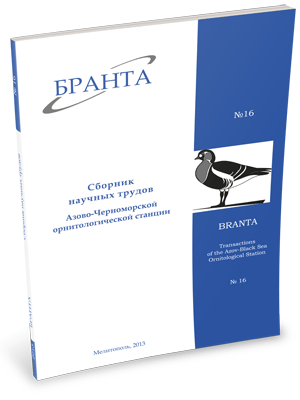
Transactions
of the Azov-Black Sea Ornithological Station



Eco-ethological adaptations of common ground-nesting forest passerines to transformed environment of Left-bank Ukraine
A. B. Chaplygina
In Left-bank Ukraine, the most vulnerable to environment transformation are stenotopic typical terrestrial bird species, which abundance ranges from 17 (Tree Pipit Anthus trivialis) and 22 (Wood Warbler Phylloscopus sibilatrix) to 30 pairs/km2 (Thrush Nightingale Luscinia luscinia). Breeding success is 50% in the Tree Pipit, and 55% in the Wood Warbler and the Thrush Nightingale. The Chiffchaff (Phylloscopus collybitus abietinus) and Yellowhammer (Emberiza citrinella) in the course of evolution have developed adaptations to nest at near-ground level where they locate nests in land hollows, masking them with grass, or on bushes. This provides maximum protection of their offspring from land predators. Breeding success increases from 75% in the Yellowhammer to 65% in the Chiffchaff, whereas their abundance is 25 and 40 pairs/km2 respectively. The Robin (Erithacus rubecula) uses for nesting a near-ground level, natural niches or man-made constructions, and thus has high breeding success (60%) that is an evidence of a species significant plasticity in nests location under conditions of transformation of a territory.
Read the paper in a PDF file